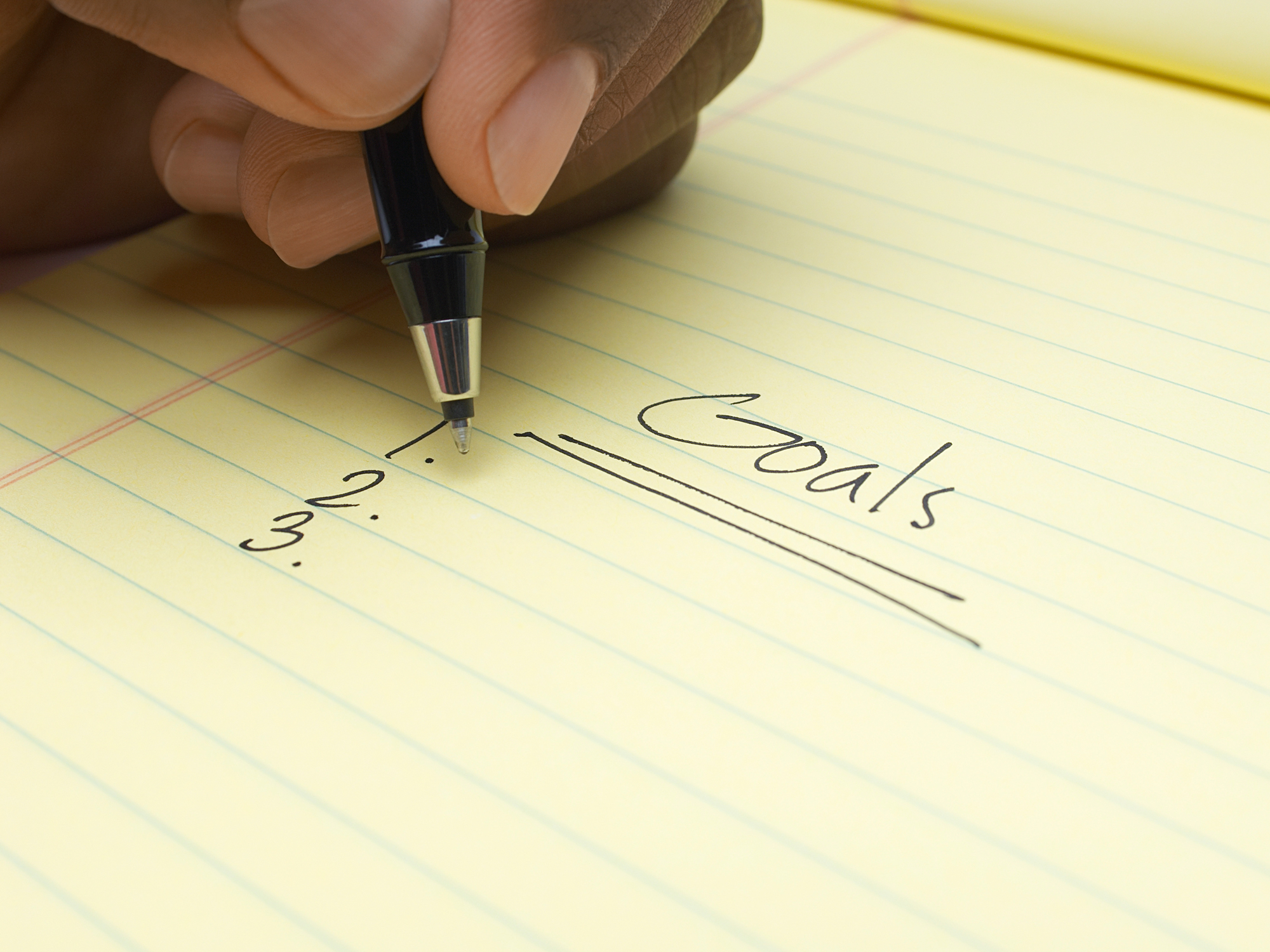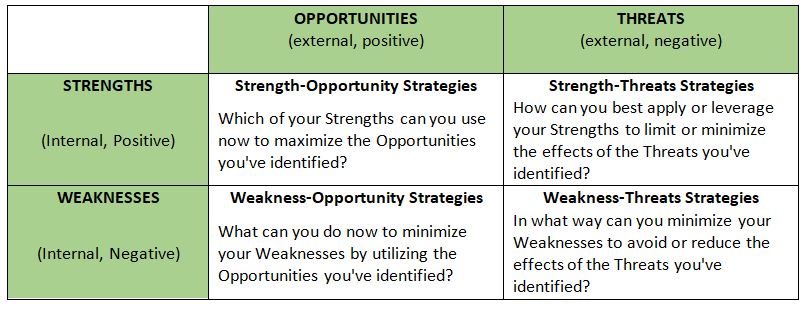Get Easy Health Digest™ in your inbox and don’t miss a thing when you subscribe today. Plus, get the free bonus report, Mother Nature’s Tips, Tricks and Remedies for Cholesterol, Blood Pressure & Blood Sugar as my way of saying welcome to the community!
Get the health you want with a personal plan

Last week, I introduced a concept from business development and marketing and applied it to wellness goals. It’s called a SWOT analysis, and it helps you uncover the strengths, weaknesses, opportunities and threats surrounding your ability to achieve your health and wellness goals.
Today, let’s carry those insights forward into seeing how they interrelate and how we can leverage them to accomplish our goals of losing weight, decreasing pain, increasing fitness levels, eating better and so on.
SWOT Data Provides Strategies
If you followed the method from last week of making a four quadrant SWOT matrix, that includes lists if information regarding your current and potential health and wellness strengths, weaknesses, opportunities and threats, you can now cross reference it.
Use the chart below to help you see how this comes together and the questions in it to help you identify the elements that can come into play.

Here are some tips:
- Make a list of your strength-opportunities
- Make a list of your strength-threats
- Make a list of your weakness-opportunities
- Make a list of your weakness-threats
Adjust the plan and strategy
Now that you have done the analysis and created a cross-analysis based on the areas you’ve identified, it’s time to tighten up or recreate your health and wellness plan and the strategies used to achieve it.
Here are some tips:
- Develop a plan that works with your strengths and bolsters them.
- Find ways that you can boost up your weaknesses, turning some into strengths.
- Think of ways that you can apply your strengths in a way that reduces your threats.
- Think of best ways to seize the opportunities you have identified.
Most important is to make a plan based on the above insights that is comprehensive, works from your strengths, explores your opportunities while reducing weaknesses and threats.
Set your goals and strategy
To be successful in any endeavor you need to know where you are headed, and this means setting goals. Where health and wellness goals are concerned, make a list of things you want to improve on, like: losing 10 pounds, running an extra mile a week, eating fewer snacks between meals, getting more restful sleep, allowing time to de-stress every day, etc.
Once you have this written down in a way that makes sense to you and is easy to follow, I suggest you set for yourself SMART wellness goals. The practice known as SMART is another tool from business I like to apply to wellness, and it refers to setting goals that are Specific, Measurable, Attainable, Realistic and Timely. You can read about the SMART process here.
With a little time, consideration and effort you can use SWOT and SMART to change the way you view and approach your health and wellness goals enough to improve your quality of life. Good luck!












